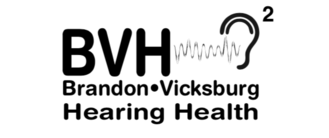Audiogram Testing:
As countless scores of computerized advancements continually enter the multifaceted human health industry at an unprecedentedly rapid rate, patients now have a particularly hard time staying updated about various medical techniques. Nevertheless, this doesn’t mean that one can’t have a solid understanding some basic details about a number of the most widespread therapeutic or diagnostic machines and their fundamental working mechanisms.
This article highlights a few technical features, in-depth tips, and practical guidelines about audiograms. Continue reading to discover the simple definition of an audiogram, audiogram specialist skills, and also get an insightful glimpse into this vitally useful ear treatment option.
1. What’s an Audiogram?
Simply put, an audiogram is a highly accurate graphical representation of one’s audible threshold for standardized frequencies as captured with the aid of an audiometer. In this type of graph, the X axis shows various frequencies in terms of Hertz while the Y axis records sound intensity (also in terms of Hertz). In order to determine the different hearing thresholds of certain individuals, rigorous audio tests have to be carefully carried out. During this intricate examination, many varied sound tones and specified pitches have to be kept under a constant check.
For the ear treatment specialist to accurately note a patient’s hearing capacity, many sound variations are voiced to them. Whenever they clearly perceive a given sound, an affirmative response is relayed to the testing experts by raising a hand. The underlying motive of these repeatedly performed observations is to discover the lowest sound perceivable by a particular person at specific distances. The results thereof are then analyzed to help your hearing health specialist locate some verified physiological basis for prescribing the most appropriate treatment for the physically impaired patient in question.
2. An Audiogram’s Working Mechanism Explained
Having now clearly understood how this graphical testing method works, it’s also important to remember that the audio examinations performed on patients differ from one individual to another. For instance, the nature of audiogram tests for young people aren’t similar to those administered on matured adults. While most audioprosthologists will alter the sound hearing measurement mechanisms across numerous patients, the end prescriptive procedures remain.
One of the major reasons why some individuals could need further, or additional checks, is the fact that the examiners might sometimes try to determine if there’s a normal audio communication between the outer ear and the brain via the mid ear passageways. For one to fully comprehend the actual operational methodologies of an audiogram, it’s imperative to know that a normal person’s hearing capacity stands at 20 dBHL. In a similar vein, it is also helpful to note that both vowel and consonant sounds have to be kept within natural face-to-face communication levels.
The basic idea behind these practical comparisons is that a victim of hearing impairment will be found unable to capture certain sounds that are otherwise fully audible to a healthy counterpart. At the very end of these thorough testing exercises, score sheets are prepared to point out the exact hearing abilities and defects of different patients.
Basically, these observations are premised on the primary concept that consonant-filled audios are particularly imperceptible for high-frequency ear problems. Once your hearing health expert clearly understands the exact causes and extents of your hearing difficulties, the correct hearing aid is prescribed so as to lower or amplify any troublesome audio features.
3. Key Benefits of Audiogram Tests
Your ears are extremely important parts of the body. As such, it is wise to have them regularly checked out in order to detect any signs of trouble before possibly undetectable hearing issues run out of hand. In fact, statistics point out that most patients usually come to realize that they have hearing impairment problems when the issue is already too advanced for expedited therapeutic interventions.
Based on the foregoing information above, no one should assume that audiogram tests are not necessary for them simply because they haven’t experienced any symptomatic signs of hearing failure. Given that these tests don’t require hazardous invasive procedures, they’re not only markedly safer, but also less costly by far. Therefore, going in for these significantly simple and straightforward tests will always keep you on the safer side of both your budget and personal wellness. Never overlook the wisdom behind the time-honored adage that “Prevention is always better than having to find a cure!”.
4. Conclusion/Recommendation:
Have you already found a highly reputed health facility that meets all the necessary quality indicators, has high standards of professional ethics, and integrity checks? If not yet, then don’t worry because you’ll discover all these attributes in Hearing Health Mississippi – a well-known Hearing Health testing and treatment center that has been proving trusted and quality customer care for over 26 years! Call us today to book an appointment!
Call: 1-800-654-3210
We have locations in both Vicksburg and Brandon Mississippi.
Click Here to read about the different kinds of Hearing Tests we Provide

